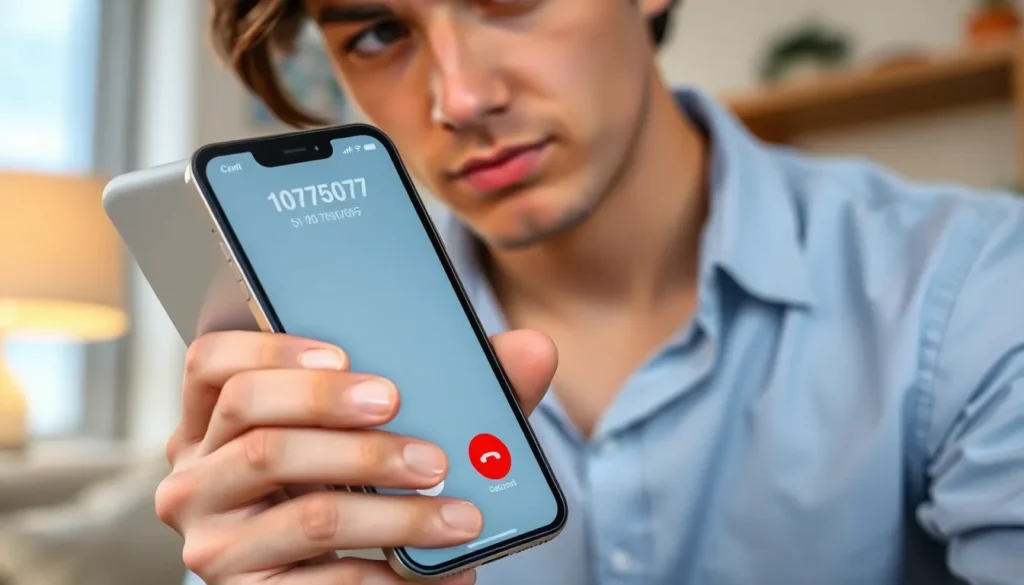We’ve all been there—one minute you’re snapping selfies, and the next, your iPhone’s face is more shattered than your hopes of a perfect screen. But don’t panic! Even a smashed iPhone can still hold your precious data hostage. The good news? Transferring that data to a new device is easier than convincing your friend to stop using a flip phone.
Table of Contents
ToggleUnderstanding the Challenge
Transferring data from a smashed iPhone poses unique challenges. Damage can hinder accessibility to critical files, including photos and contacts. A shattered screen often makes navigating the device difficult. In some cases, internal components sustain damage, impacting storage and system functionalities.
Users often worry about data loss in these situations. Despite the physical damage, many options exist to retrieve information. Using cloud backups, such as iCloud, simplifies data recovery if previous backup settings were enabled. Apple’s services automatically save important files, ensuring access through a new device.
For those without backups, third-party tools may provide solutions. These recovery programs often facilitate data transfer, allowing users to extract files directly from a malfunctioning device. Some applications support a wide range of file formats, easily transferring photos, videos, and documents.
Assessing the extent of damage becomes crucial. A functioning touchscreen allows for more straightforward data retrieval. If the screen is unresponsive, options like hardware repairs or professional services may be necessary. Evaluating the practicality of repair versus data recovery affects decision-making in these situations.
Using recovery techniques demands knowledge about device connectivity. Familiarity with settings and features can expedite the process. Following precise steps ensures a smoother transition to a new iPhone. Understanding the challenges associated with data transfer helps users make informed choices throughout their recovery journey.
Methods for Data Transfer

Transferring data from a damaged iPhone to a new one can be handled through several effective methods.
Using iCloud Backup
iCloud Backup serves as a reliable way to recover files from a smashed iPhone. Backing up data requires an active iCloud account and internet access. If the iPhone’s settings permit, iCloud automatically syncs files stored in the cloud. Users can easily transfer photos, contacts, and messages by signing into the same iCloud account on the new device. Enabling “Restore from iCloud Backup” during the setup process makes the transition seamless. For those who backed up their data before damage occurred, this method ensures a comprehensive data recovery.
Direct Transfer with Lightning Cable
Directly transferring data using a Lightning cable provides an effective solution for accessing information from a damaged device. Connecting both iPhones with a Lightning cable enables quick data migration. If the old device’s screen responds to touch, users can easily follow on-screen prompts. Completing this process helps ensure that apps, settings, and files move to the new iPhone without needing additional tools. Data transfer is generally faster compared to cloud methods, making it an attractive option for those with extensive content stored on their old device.
Third-Party Software Solutions
Using third-party software can simplify the process of transferring data from a smashed iPhone to a new device. Various tools exist to aid recovery, even when the original device’s screen is damaged or unresponsive.
Pros and Cons of Third-Party Tools
Third-party tools offer several advantages for data recovery. Flexible options enable users to extract files from devices with functional issues. Many programs support various file types, enhancing compatibility. Additionally, user-friendly interfaces allow for straightforward navigation, making the recovery process more accessible.
However, drawbacks exist. Some tools may require a purchase or subscription, which can be a downside for users seeking free options. Unreliable software could pose risks, including data corruption or privacy concerns. Compatibility issues might arise with specific iOS versions, potentially complicating recovery efforts. Evaluating the reputation of each software solution becomes essential to ensure data safety and integrity during the transfer process.
Precautions to Take
Assessing the damage before attempting data transfer remains crucial. Understanding whether the screen is responsive enables easier file access. Utilizing protective gear, like a case or screen cover, helps prevent further damage during handling. Ensuring power remains on prevents full shutdown, which complicates data recovery.
Backing up data through iCloud or a computer provides an additional security layer. Regular backups protect files from irreversible loss. Consider testing any third-party recovery tools with caution, since not all tools guarantee success in data retrieval. Check compatibility with the specific device model and iOS version before using such software.
Handling the device gently minimizes the risk of additional damage. Touching sensitive areas without care may lead to more issues, especially with internal components. Transferring data soon after the damage occurs increases the likelihood of recovery, as prolonged exposure to damage can worsen device condition.
Choosing a reliable data transfer method is essential. Opt for a known and trusted procedure, such as using a Lightning cable if the old iPhone is still operational. Following manufacturers’ instructions ensures effective use of recovery tools without compromising data integrity.
Consulting professional services might provide the best results for severely damaged devices. Experienced technicians often recover data that users cannot access on their own. Exploring insurance or warranty options may also cover repair or data recovery costs, thus avoiding unexpected expenses.
Transferring data from a smashed iPhone to a new device doesn’t have to be a daunting task. With the right approach and tools, users can recover important files even when faced with physical damage. Whether relying on iCloud backups or utilizing direct transfer methods, the key lies in assessing the device’s condition and choosing the most effective recovery option.
For those without backups, third-party software can provide a viable alternative, offering flexibility and ease of use. It’s essential to handle a damaged device carefully and act quickly to maximize data recovery chances. By staying informed and prepared, users can navigate the transition to a new iPhone with confidence and peace of mind.






